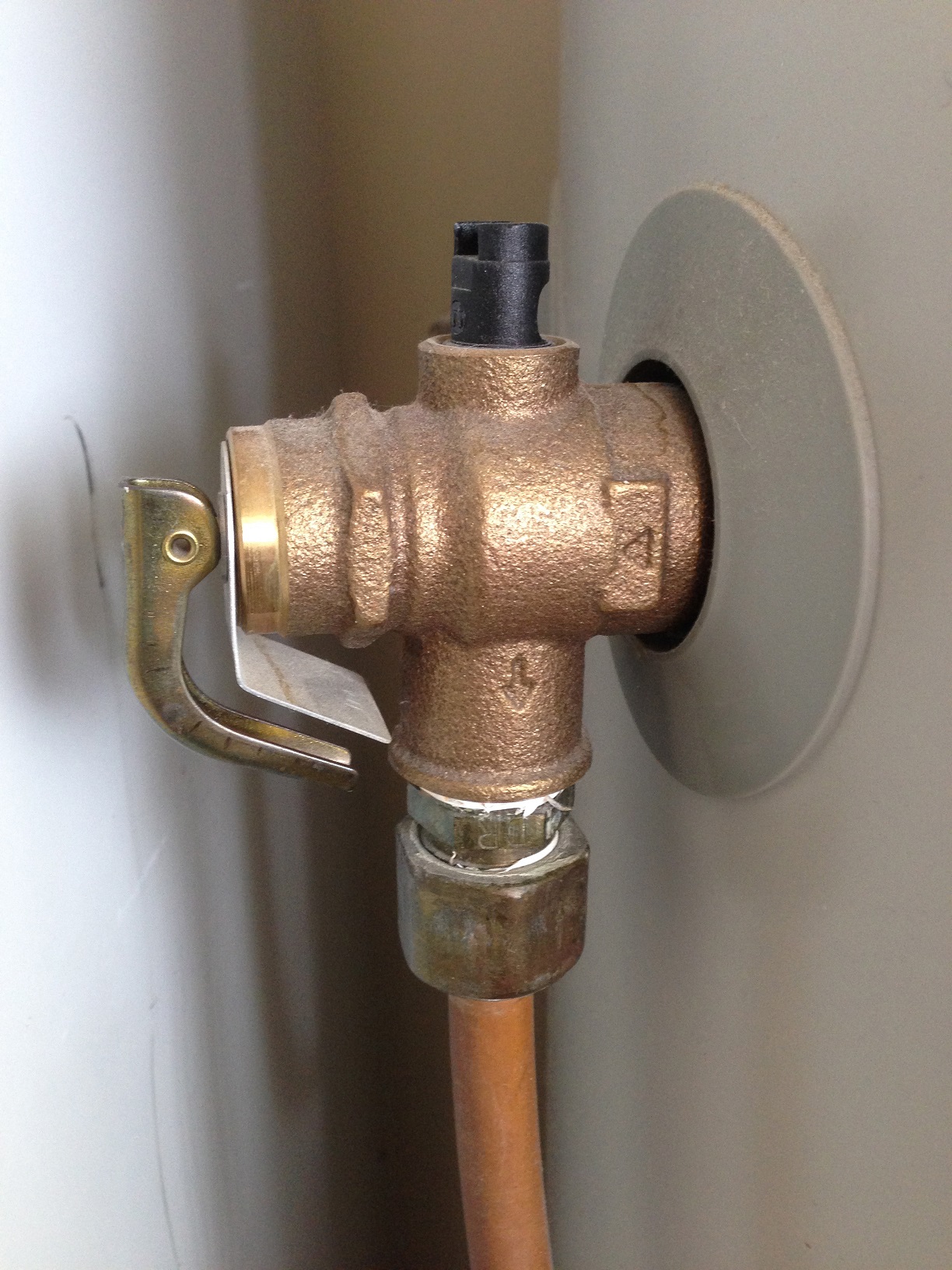Did you know that your water heater will function better and be safer if you do a little routine maintenance? Some water-heater experts recommend testing every six months. More frequent testing can reduce the chance of a leak caused by mineral and corrosion build up. The temperature and pressure relief valve (TPR valve) opens to release pressure build up in the water heater when the temperature or the pressure get dangerously high, preventing a possible explosion.
A build up of mineral salt, rust, and corrosion can cause a TPR valve to freeze up and become nonoperational.
To test the valve to ensure that it’s working properly, simply raise and lower the test lever several times so it lifts the brass stem that it’s fastened to. Hot water should rush out of the end of the drainpipe. If no water flows through the pipe or you get just a trickle, replace the valve.
Sometimes you will hear the Tank filling with water. This means that the tank had a build up of air preventing the tank from filling. This sometimes happens over time or if repairs have been made and the water supply valve is turned off and on several times. Holding the valve open until the water starts to come out of the overflow tells you the tank is full.
However, if a leak results immediately after a test, simply operate the test lever several times to try to free lodged debris that may be preventing the valve from seating properly. If the valve is doing its job and hot water is dripping or spewing out of the TPR drain valve, turn down the temperature on the water-heater controller and/or turn down the water pressure. But I think, if it continues to leak have a plumber replace the valve especially if its over 5 years old.
Moved Permanently
The document has moved here.

